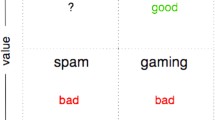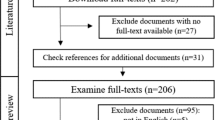Abstract
The rise of the social web and its uptake by scholars has led to the creation of altmetrics, which are social web metrics for academic publications. These new metrics can, in theory, be used in an evaluative role, to give early estimates of the impact of publications or to give estimates of non-traditional types of impact. They can also be used as an information seeking aid: to help draw a digital library user’s attention to papers that have attracted social web mentions. If altmetrics are to be trusted then they must be evaluated to see if the claims made about them are reasonable. Drawing upon previous citation analysis debates and web citation analysis research, this article discusses altmetric evaluation strategies, including correlation tests, content analyses, interviews and pragmatic analyses. It recommends that a range of methods are needed for altmetric evaluations, that the methods should focus on identifying the relative strengths of influences on altmetric creation, and that such evaluations should be prioritised in a logical order.

Similar content being viewed by others
References
Bar-Ilan, J., Haustein, S., Peters, I., Priem, J., Shema, H., & Terliesner, J. (2012). Beyond citations: Scholars’ visibility on the social Web, 17th International Conference on Science and Technology Indicators (STI2012) (pp. 98–109). Montreal: Science-Metrix and OST.
Blackburn, J. L., & Hakel, M. D. (2006). An examination of sources of peer-review bias. Psychological Science, 17(5), 378–382. doi:10.1111/j.1467-9280.2006.01715.x.
Bornmann, L., Nast, I., & Daniel, H.-D. (2008). Do editors and referees look for signs of scientific misconduct when reviewing manuscripts? A quantitative content analysis of studies that examined review criteria and reasons for accepting and rejecting manuscripts for publication. Scientometrics, 77(3), 415–432.
Brooks, T. A. (1986). Evidence of complex citer motivations. Journal of the American Society for Information Science, 37, 34–36.
Case, D. O., & Higgins, G. M. (2000). How can we investigate citation behaviour? A study of reasons for citing literature in communication. Journal of the American Society for Information Science, 51(7), 635–645.
Ceci, S. J., & Williams, W. M. (2011). Understanding current causes of women’s underrepresentation in science. Proceedings of the National Academy of Sciences of the United States of America, 108(8), 3157–3162.
Desai, T., Shariff, A., Shariff, A., Kats, M., Fang, X., et al. (2012). Tweeting the meeting: An in-depth analysis of Twitter activity at Kidney Week 2011. PLoS One, 7(7), e40253. doi:10.1371/journal.pone.0040253.
Helic, H., Strohmaier, M., Trattner, C., Muhr, M., & Lerman, K. (2011). Pragmatic evaluation of folksonomies. Proceedings of the 20th international conference on world wide web (WWW2011) (pp. 417–426). New York, NY: ACM.
Horrobin, D. F. (1990). The philosophical basis of peer review and the suppression of innovation. Journal of the American Medical Association, 263(10), 1438–1441.
Kousha, K., & Thelwall, M. (2007). Google scholar citations and Google Web/URL citations: A multi-discipline exploratory analysis. Journal of the American Society for Information Science and Technology, 58(7), 1055–1065.
Kousha, K., & Thelwall, M. (2008). Assessing the impact of disciplinary research on teaching: An automatic analysis of online syllabuses. Journal of the American Society for Information Science and Technology, 59(13), 2060–2069.
Kousha, K., & Thelwall, M. (2009). Google book search: Citation analysis for social science and the humanities. Journal of the American Society for Information Science and Technology, 60(8), 1537–1549.
Kousha, K., Thelwall, M., & Rezaie, S. (2010). Using the web for research evaluation: The integrated online impact indicator. Journal of Informetrics, 4(1), 124–135.
Lee, C., Sugimoto, C. R., & Zhang, G. (2013). Bias in peer review. Journal of American Society for Information Science and Technology, 64(1), 2–17.
Levitt, J., & Thelwall, M. (2011). A combined bibliometric indicator to predict article impact. Information Processing and Management, 47(2), 300–3008.
Li, X., Thelwall, M., & Giustini, D. (2012). Validating online reference managers for scholarly impact measurement. Scientometrics, 91(2), 461–471.
MacRoberts, M. H., & MacRoberts, B. R. (1996). Problems of citation analysis. Scientometrics, 36(3), 435–444.
Mahoney, M. J. (1977). Publication prejudices: An experimental study of confirmatory bias in the peer review system. Cognitive Therapy and Research, 1(2), 161–175.
Marcus, A., & Oransky, I. (2011). Science publishing: The paper is not sacred. Nature, 480, 449–450.
Merton, R. K. (1973). The sociology of science. Theoretical and empirical investigations. Chicago: University of Chicago Press.
Moed, H. F. (2005). Citation analysis in research evaluation. New York: Springer.
Mohammadi, E., & Thelwall, M. (2013). Assessing non-standard article impact using F1000 labels. Scientometrics. doi:10.1007/s11192-013-0993-9.
Neuendorf, K. (2002). The content analysis guidebook. London: Sage.
Oppenheim, C. (2000). Do patent citations count? In B. Cronin & H. B. Atkins (Eds.), The web of knowledge: A festschrift in honor of Eugene Garfield (pp. 405–432). Metford, NJ: Information Today Inc. ASIS Monograph Series.
Peters, D. P., & Cecia, S. J. (1982). Peer-review practices of psychological journals: The fate of published articles, submitted again. Behavioral and Brain Sciences, 5, 187–195.
Priem, J., & Costello, K. L. (2010). How and why scholars cite on twitter. Proceedings of the American society for information science and technology (ASIST 2010) (pp. 1–4). doi:10.1002/meet.14504701201.
Priem, J., Piwowar, H.A., & Hemminger, B.M. (2012). Altmetrics in the wild: using social media to explore scholarly impact. Retrieved from http://arxiv.org/abs/1203.4745v1. Accessed 23 Aug 2013.
Priem, J., Taraborelli, D., Groth, P., & Neylon, C. (2011). Altmetrics: A manifesto. Retrieved from http://altmetrics.org/manifesto/. Accessed 23 Aug 2013.
Procter, R., Williams, R., Stewart, J., Poschen, M., Snee, H., Voss, A., et al. (2010). Adoption and use of Web 2.0 in scholarly communications. Philosophical Transactions of the Royal Society A, 368(1926), 4039–4056.
Seglen, P. O. (1998). Citation rates and journal impact factors are not suitable for evaluation of research. Acta Orthopaedica Scandinavica, 69(3), 224–229.
Shema, H., Bar-Ilan, J., & Thelwall, M. (2012). Research blogs and the discussion of scholarly information. PLoS One, 7(5), e35869. doi:10.1371/journal.pone.0035869.
Thelwall, M., Haustein, S., Larivière, V., & Sugimoto, C. R. (2013). Do altmetrics work? Twitter and ten other social web services. PLOS One, 8(5), e64841. doi:10.1371/journal.pone.0064841.
Thelwall, M., & Kousha, K. (2008). Online presentations as a source of scientific impact? An analysis of PowerPoint files citing academic journals. Journal of the American Society for Information Science and Technology, 59(5), 805–815.
van Raan, A. F. J. (1998). In matters of quantitative studies of science the fault of theorists is offering too little and asking too much. Scientometrics, 43(1), 129–148.
Vaughan, L., & Huysen, K. (2002). Relationship between links to journal Web sites and impact factors. ASLIB Proceedings, 54(6), 356–361.
Vaughan, L., & Shaw, D. (2003). Bibliographic and web citations: What is the difference? Journal of the American Society for Information Science and Technology, 54(14), 1313–1322.
Vaughan, L., & Shaw, D. (2005). Web citation data for impact assessment: A comparison of four science disciplines. Journal of the American Society for Information Science and Technology, 56(10), 1075–1087.
Weller, K., Dornstädter, R., Freimanis, R., Klein, R. N., & Perez, M. (2010). Social software in academia: Three studies on users’ acceptance of web 2.0 services. Proceedings of the 2nd Web Science Conference (WebSci10), Retrieved May 29, 2013 from http://www.phil-fak.uni-duesseldorf.de/fileadmin/Redaktion/Institute/Informationswissenschaft/weller/websci10_submission_62.pdf.
Wennerås, C., & Wold, A. (1997). Nepotism and sexism in peer-review. Nature, 387, 341–343.
Whitley, R. (2000). The intellectual and social organization of the sciences (2nd ed.). Oxford: Oxford University Press.
Acknowledgments
This study is part of the FP7 EU-funded project ACUMEN on assessing Web indicators in research evaluation.
Author information
Authors and Affiliations
Corresponding author
Rights and permissions
About this article
Cite this article
Sud, P., Thelwall, M. Evaluating altmetrics. Scientometrics 98, 1131–1143 (2014). https://doi.org/10.1007/s11192-013-1117-2
Received:
Published:
Issue Date:
DOI: https://doi.org/10.1007/s11192-013-1117-2




